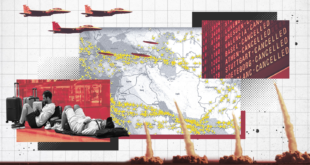KARACHI (Reuters) -The Pakistani rupee weakened on Wednesday due to import payments, weak economic fundamentals and concern over tension with the United States over U.S. military attacks on militants in Pakistan.
The rupee traded at a record low of 77.65 early in the session compared with a previous low of 77.45 set on September 3.
However, it steadied and dealers said it closed at 77.18/23 to the dollar compared with Tuesday’s closing of 76.90/77.00.
Dealers said there was suspicion that the central bank had intervened selling dollars to help the rupee, having earlier left the market short of dollars because of its buy/swap operations.
The central bank has been buying dollars in the ready market with a simultaneous commitment to sell dollars back at future dates, they said.
State Bank of Pakistan officials declined to comment.
“The rupee has been under pressure since yesterday due to some import payments,” said a currency dealer.
“The outlook is still bleak due to the political developments this week and depleting reserves.”
Dealers said the market was nervous about the situation on the Pakistan-Afghanistan border and because of the global financial crisis after U.S. investment bank Lehman Brothers filed for bankruptcy protection this week.
Pakistani security officials said on Monday that troops had fired on U.S military helicopters and forced them to turn back to Afghanistan, at the same place on the border that U.S. commandos had raided earlier in the month, sparking a diplomatic storm.
The prospect of souring relations between Pakistan and its largest bilateral donor was unsettling given the need to build foreign currency reserves that were down to $9.1 billion in the week that ended on September6.
Reserves were at a record high of $16.5 billion in October last year.
Some inflows are expected in coming weeks, including $1 billion from the World Bank, $500 million from the Asian Development Bank (ADB).
An expected Saudi oil facility would also help Pakistan save foreign exchange. But all of these have still to materialize.
The rupee has lost 20.20 percent against the dollar this year because of a deteriorating balance-of-payments position.
Aside from dwindling reserves, Pakistan’s macroeconomic numbers are dismal and growth is slowing after six strong years.
The ADB said this week Pakistan’s gross domestic product growth would be 4.5 percent in the 2008/09 (July-June) fiscal year, compared with a target of 5.5 percent.
“With continued high oil prices, an ongoing power deficit, and tightened demand management policies to correct macroeconomic imbalances, economic growth in FY2009 is put at only 4.5 percent,” the ADB said in an Outlook 2008 Update.
 Eurasia Press & News
Eurasia Press & News


